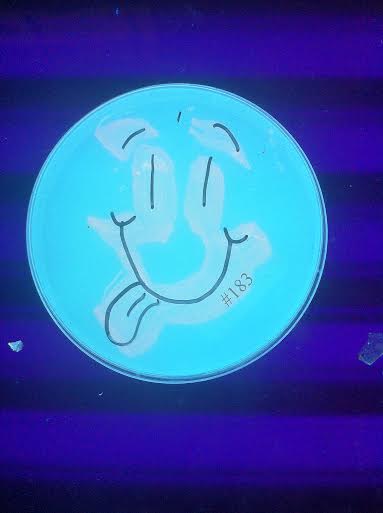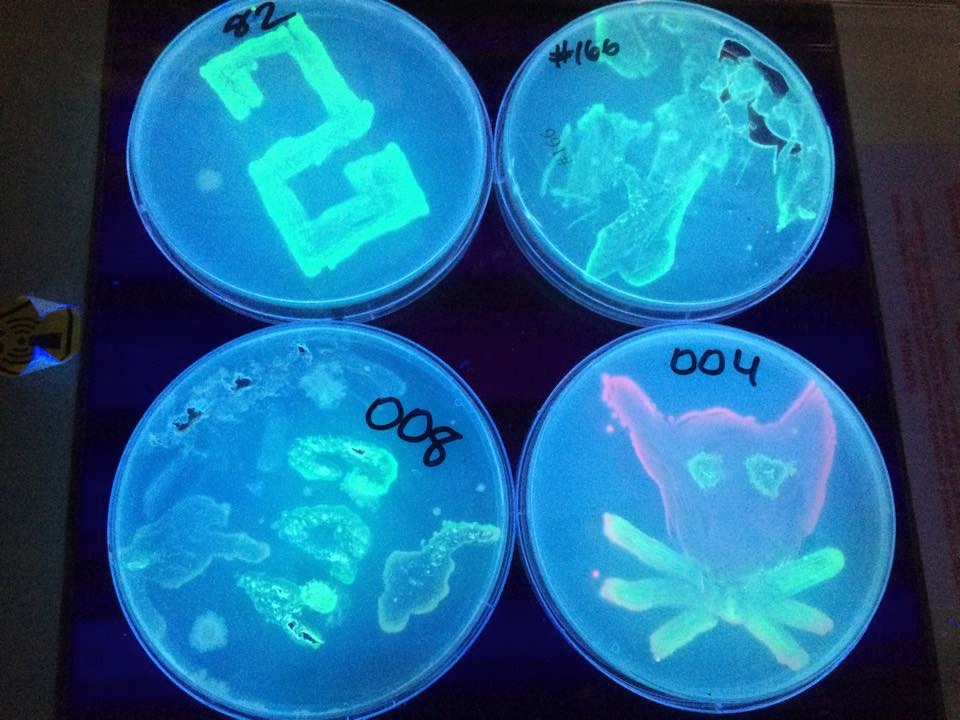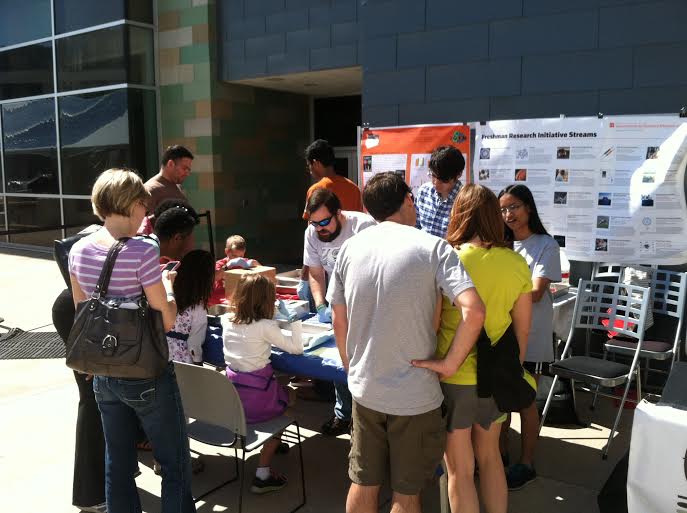Team:Austin UTexas/Practices
Human Practices
The process of genetically enhancing organisms to perform a designated task can have many applications in a variety of different fields. For instance, advances in synthetic biology can lead to technologies such as bacterial photography, tumor-targeting bacteria, and biofuels (Sleight, 2010). However, in order for a genetically enhanced organism to perform its desired function reliably, the installed genes must persist through numerous generations without mutating or ‘breaking’. Due to a device’s metabolic load and an organism’s evolvability, achieving genetic stability can be challenging. By learning more about genetic stability, we can develop ways to increase stability in future devices. This will facilitate the development of novel technologies beneficial to many fields, such as medicine and energy.
We believe that our work has implications for the future of microbial medicine. Many bacteria have the ability to maintain gene expression in probiotic bacteria without mutating into a non-functioning or malicious construct. Bacteria are often used in such treatments as gut repopulation, the recolonizing of unpopulated intestines with the bacteria necessary for digestive health (Ruder 2011). By ensuring that genetically modified bacteria are as stable as possible, the risks of synthetic biology therapies can be minimized and society’s ability to treat and cure ailments can be increased.
Additionally, the continued depletion of nonrenewable energy sources has created a demand for novel, and preferably inexpensive, energy sources. While synthetic biology offers one possible solution, its viability is hindered as a result of genetic instability. Producing the necessary biofuel molecules or precursors requires energy and carbon from the cells, which can diminish a cell’s fitness and break the genetic circuit (Ferry 2012). The development of a more stable genetic device could lead to a robust method of biofuel production and help alleviate the fuel crisis.
Synthetic biology has the potential to enhance many aspects of society on a global scale. Mitigating the fuel crisis and furthering microbial medicine are two possibilities. However, if a genetically modified organism’s evolvability causes undesirable changes too quickly, the genetic device would be futile. By addressing and solving the issue of stability we can employ synthetic biology to advance both science and society.
South By South West
The 2015 iGEM group had the opportunity to present at Austin's premier festival South By South West Create, that offers a unique convergence of emerging technologies and partners with community support. One of the main concerns for the exponentially growing field of synthetic biology is bridging the gap between science and society. Understanding the sociological components of introducing new synthetic technology to the public is an area that needs more intervention from scientists and the government. At this year's 2015 SXSW Create, we decided to help our local community better understand what synthetic biology is all about, while also promoting STEM education. Over the course of the weekend, we created an interactive synthetic biology booth called "Painting with E. coli", where participants can use various fluorescent E. coli to "paint" on agar plates. Fluorescent bacteria in the colors red, cyan, blue, yellow, and green were prepared in our lab using BioBrick parts.Initially, participants were hesitant in using E. coli, as they connected it with the harmful virulent E. coli usually reported in the news as causing food poisoning and even deaths. Our lab members spent time talking with each participants to gain an understanding of current opinions on synthetic biology and GMO's, while also trying to correct common misunderstandings and highlight the benefits of the uses of this field. From these preliminary verbal surveys and interactions with the local community, we found the most common worries people have about synthetic biology is bioterrorism, creating radically new pathogens, DIY biology that can be used by anyone for harm, and toxins in GMOs that are unsafe. Our goal was to communicate the effectiveness of synthetic biology in allowing researchers to reduce costs of medicines, such as Insulin, increase effiency in manufacturing, creating biocontrolled bacteria to promote plant growth during drought stress to increase agricultural productivity, among other things. At the heart of the Texas Capitol, with the riffs and runnings of the State Government, policy advocates, and unique conference such as SXSW, we hope to partner with others in improving to the public's knowledge of synthetic biology through outreach, education, and awareness. From a personal perspective, we have encountered peers at the University that are not entirely well-versed on the benefits of this technology, but slowly iGEM at the University of Texas at Austin is making a bigger contribution in educating our peers and reaching out to the entire community.
References
- Amyris. 2014 Annual Report, December 31st, 2014. Web. September 10th, 2015.
- Borody, Thomas J., and Alexander Khoruts. "Fecal microbiota transplantation and emerging applications." Nature reviews gastroenterology and hepatology 9.2 (2012): 88-96.
- Ferry, M.S., Hasty, J., Cookson, N.A. (2012) Synthetic biology approaches to biofuel production. Biofuels 3: 9-12.
- Ruder, Warren C., Ting Lu, and James J. Collins. "Synthetic biology moving into the clinic." Science 333.6047 (2011): 1248-1252.


